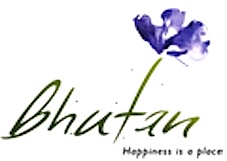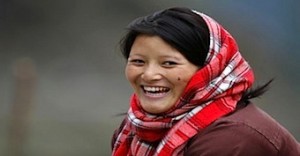Travel agents should advise all clients visiting Bhutan that the Department of Immigration has announced that a Biometric System is being rolled out nationwide for implementation. All foreigners visiting the country, except diplomatic and official passport holders, are now required to enroll fingerprints and take facial image at the respective point of entry. 
Bhutan is one of the smaller and less visited countries in the world – it welcomed just 64 Irish visitors in 2013 and 72 in 2012, but with Insight Vacations featuring Bhutan in its programme this year there could be a significant increase in 2014. Elizabeth Abusleme, Marketing Manager for Europe and Latin America, Tourism Council of Bhutan, told Irish Travel Trade News: “The TCB wants to increase the number of Irish visitors for 2014 as long as they respect the traditions and the environment, so we will continue working to encourage interested tour operators to include Bhutan in their programmes.”
Economists the world over have argued that the key to happiness is obtaining and enjoying material development. Bhutan, however, adheres to a very different belief and advocates that amassing material wealth does not necessarily lead to happiness – and measures progress not by the popular idea of Gross Domestic Product but through Gross National Happiness.
Western Bhutan
While many visitors to Bhutan would not be able to experience all it has to offer, the Western Region has an array of cultural experiences set against a mountainous backdrop. Western Bhutan is divided into six districts: Thimphu, Paro, Haa, Wangdue Phodrang, Punakha and Gasa.
Thimphu is Bhutan’s most modern city offering a blend of ancient traditions and customs with a cosmopolitan vibe. Visitors to the city can immerse themselves into the lifestyle of contemporary Bhutanese and explore the financial, religious and government centre of the country, which is home to the Tashichho Dzong (a Buddhist monastery and fortress), the Buddha Dordenma Statue and a daily farmer’s market offering locally grown produce. Curiously, Thimphu is the only city in the world that does not use traffic lights.
The Paro Valley is famed as the home to the Takstang Monastery, also known as the Tiger’s Nest. The monastery is a sacred temple built in 1692 and suspended off a cliff. Along with Tiger’s Nest, Paro Valley is home to 155 temples and monasteries dating back as far as the 14th century. The Paro Valley is one of the most picturesque areas in the country and the town has expanded in recent years to include a number of restaurants and bakeries. The central plaza of the town is adorned with a large prayer wheel and small amphitheatre where traditional performances and concerts take place.
Intrepid visitors looking to discover Bhutan’s most remote parts can head to Haa, located southwest of Paro and the smallest Dzongkhag (district) in Bhutan. Alpine forests and tranquil mountain peaks make Haa one of the best areas in the country for mountain biking enthusiasts. In the summer months, visitors can experience the Haa Summer Festival, a vibrant celebration of the nomadic lifestyles of the local people, where they can sample local home cooked cuisine, take part in traditional sports and absorb religious performances.
Wangdue Phodrang is one of the largest districts in the country with a climate that varies with tropical forests in the south, and cooler, snowy regions in the north. The district is perfect for wildlife spotters as it is home to red pandas, tigers and leopards. Phobjikha Valley is a haven for birdwatchers as it is the habitat for rare birds such as the black-necked crane and white-bellied heron. Every November, the Black Necked Crane Festival is held in a bid to protect it from extinction and raise awareness and includes songs, masked dances and plays by local school children.
The former capital of Bhutan, Punakha Dzongkhag is home to Bhutan’s second oldest and second largest Dzong (fortress). The Punakha Valley enjoys a pleasant climate, warm winters and hot summers. It is an area of natural beauty and is built upon two major rivers in Bhutan, the Pho Chhu and Mo Chhu. The region contains the preserved remains of historical figure Zhabdrung Ngawang Namgyal, accredited as the unifier of Bhutan.
Gasa is the most northern district in Bhutan with an altitude reaching 4,500 metres in some parts. The region has a small population of 3,000 and visitors can experience the culture of the Layaps, nomadic herders with a unique culture to Bhutan. Gasa is also home to the Gasa Hot Springs believed to have medicinal qualities and is frequented by locals. Visitors can combine a short trek and a visit to the hot springs that lie 40 minutes from the main road.






